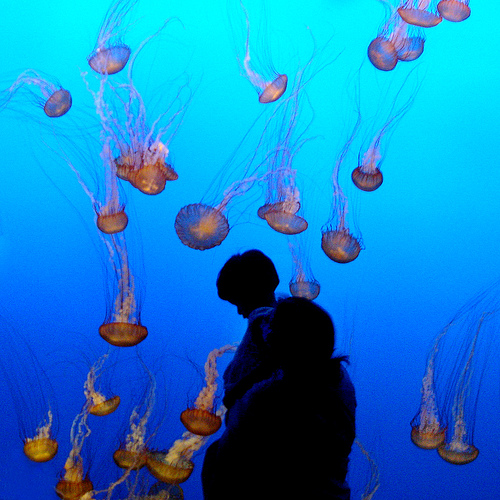
Jellyfish Swarm in Monterey, California © michale
Vagabondish is reader-supported. When you buy through links on our site, we may earn a small affiliate commission. Read our disclosure.
According to a report from the National Science Foundation (NSF), called Jellyfish Gone Wild, jellyfish swarms are becoming larger and more common. A single swarm can cover hundreds of square miles, often overrunning beaches and fish habitats.
These jellyfish swarms cause several problems, including:
- Decimating fish populations by consuming young fish and fish eggs
- Injuring people and disrupting tourism by swarming beaches
- Damaging industry by clogging pipes
Jellyfish swarms occur naturally. However, the NSF claims that our pollution of the oceans may be making them worse. It is difficult to know how much human influences may have increased their habitat, but there are indications that the environmental stresses we create are increasing the jellyfish population.
Jellyfish compete with other species for food. Commercial overfishing decreases competition for food — allowing jellyfish to thrive. People introducing non-native jellyfish species cause rapid population growth. Plus, unlike many other creatures, jellyfish adapt well to the polluted and oxygen-deprived areas of the ocean called Dead Zones. Over 400 Dead Zones exist, and that number doubles every ten years.
These swarms have been found all over the world — Hawaii, Nambia, Chesapeake Bay, the Black Sea, the Sea of Japan, and more.


